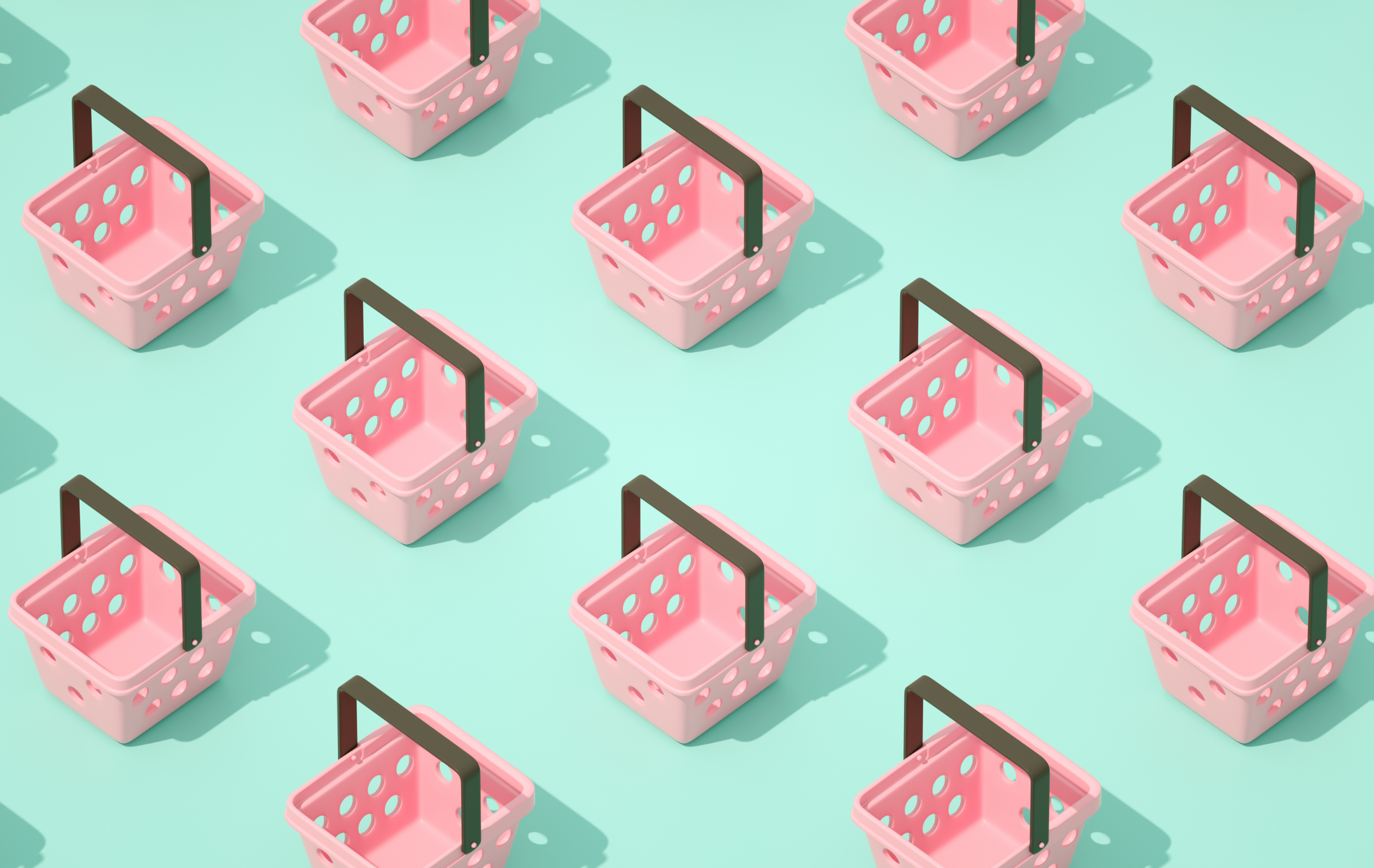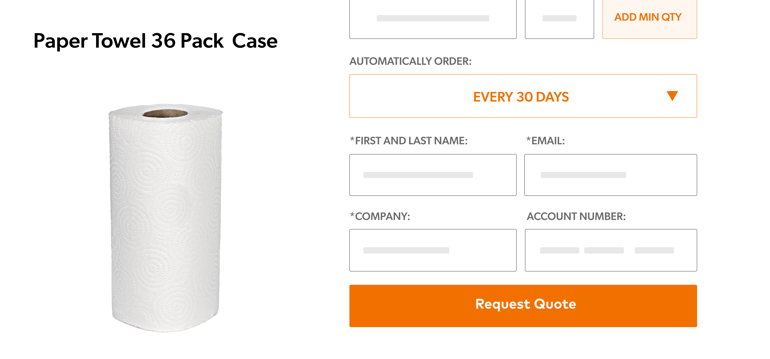By Miva | December 21, 2022

See why top ecommerce brands use Miva’s no-code platform to run
multiple stores, manage massive catalogs, and grow their revenue.
In Part I of our blog series Top Ecommerce Trends for 2023, we explored how sellers are dialing in strategies for inventory management, DTC sales channels, and the B2B buying experience as they prepare for the year to come. But the increasing share of B2B and B2C ecommerce in our economy means non-stop innovation—and relentless competition.
Read on to find out what other industry trends will be top of mind for online businesses in 2023 in Part II of our series.
In 2022, Google continued its rollout of “page experience” SEO criteria which it began in 2021. This metric measures shoppers’ perceptions of web pages, and it includes Core Web Vitals (performance, interactivity, and visual stability), mobile-friendliness, and HTTPS connections. In order to rank pages effectively, sellers should consider these factors as part of a broader view of their website’s total customer experience.
Long gone are the days of plain, utilitarian B2B wholesale ecommerce sites. Brand equity, which is simply the value generated by a brand’s name on products, is no longer just the domain of retailers. B2B sellers who are able to create a strong emotional connection between customer and brand are far more likely to convert sales. Branding elements like logo, copy, and even shipment box are crucial, with customer-facing website UI as the ultimate stage upon which branding is communicated to the public.

An Enterprise Resource Planning (ERP) system ties together data from every corner of an ecommerce business, from manufacturing to order processing to accounting. With the health of supply chains still unpredictable throughout 2023, sellers can prevent shortages, reduce costs, and keep customers informed about availability/fulfillment by integrating ERPs into ecommerce operations. “Off-the-shelf” ERP integrations often can’t be customized correctly for complex businesses, so merchants must ensure that the integration process itself doesn’t become a roadblock to cost-effectively solving for supply issues.
The explosive popularity of TikTok signals a changing of the guard for ecommerce marketing, with TikTok ad spends booming during the pandemic and now steadily growing as a percentage of total digital advertising budgets. The short-form video app with 1 billion daily users has become a prime playground for ecommerce brand advertising, with 60% of U.S. TikTok users in the Gen Z demographic. To reach this audience, sellers need to adapt content, sales techniques, and product display to fit this youthful, fast-paced, video-first environment.
The second-hand or “previously owned” product category is a mainstay of marketplaces like eBay, Etsy, and Poshmark, but more independent sellers are now adding re-commerced products to their lineups, with resale revenue projected to reap 77 million over the next few years. One big reason? Sustainability. With previously owned goods, sellers can dramatically reduce overhead, lower costs for customers, and appeal to a buying public that increasingly values well-communicated sustainable business practices when deciding which products to buy.
Historically, sales and marketing departments operate as totally separate entities, but thanks to modern, data-driven business practices, tightly integrated sales and marketing teams are delivering many seller benefits including higher customer retention, and faster revenue growth. Sellers can boost results from both sales and marketing by aligning goals/KPIs between the two departments, letting data from the sales process inform marketing efforts, and vice versa. Outstanding data visibility which connects all relevant team members is the key.
Ransomware incidents, just one form of cyberattack, rose by 41% in 2022, proving very costly for sellers and unnerving for consumers who have been suffering increasing data breaches since 2021, including supply chain exploits, DDOS, data theft, and multi-vector attacks. Merchants can protect customer data (and loyalty) by tightening control of credentials/identity systems and choosing vendors with transparent security protocols.
In the quest for increased customer loyalty, B2B sellers will incorporate more automated recurring purchase options into their online shopping experiences. Offering subscription purchasing is currently a sales champion for online retailers, but techniques like repeat orders, quick order forms, and bulk discounts were all pioneered by pre-digital wholesalers. Now, B2B ecommerce sellers are improving the creativity and effectiveness of subscription offers with data personalized presentations which are tailored to their unique buyers. For B2B businesses, subscription offers driven by customer preferences, negotiated rates, and convenient wholesale ordering can generate recurring revenue while making customers’ purchasing experiences easier and more satisfying.

Live commerce is an interactive selling mode which uses video, chat, and other streaming tools to connect salespeople with customers for live interactions. Live shopping leverages the strength of ecommerce to allow one-on-one sales assistance at a tiny fraction of the costs of staffing physical stores. It’s effective—live commerce is a conversion powerhouse with 10x the results of conventional ecommerce, and supports strong customer-brand loyalty thanks to the hyper-relevant human touch. Sellers who want to tap into this trend should think about how to incorporate chat and streaming video into their ecommerce websites.
Inflation and unreliable supply chains have increased prices for many goods, leaving shoppers scrambling for deals, freebies, and other perks to make their purchases more attractive. Taking a cue from credit card cashback offers and airline “frequent flyer” perks, ecommerce sellers are closing more sales by adding extras which reward shoppers for buying. Merchants can increase customer loyalty by adding point-based systems for purchases, special product/content access, and branded swag which make shoppers feel like VIPs.
The impact of professional social media influencers over the past decade has evolved to include substantial amounts of user-generated content (UGC) on ecommerce sites. Coming in the form of social media feeds integrated into ecommerce sites, user reviews, and uploaded product imagery, content which is created by actual brand customers holds dramatic weight in buying decisions. User content is authentic and relevant by definition, and results in huge resource savings for the marketing budget. The latest frontier is shoppable user content, which prompts customers to click through user-supplied images and purchase the featured product.
While Millennials and Gen Z grab most of today’s marketing headlines, Baby Boomers are demonstrating enormous impact on the ecommerce economy. Known as the generation with $70 trillion dollars in spending power (the greatest of any age cohort) and an increasing interest in online shopping, Baby Boomers have a unique set of preferences and buying habits which savvy sellers can serve, especially in product categories like personal wellness and comfort-based home goods—topics which are top of mind for older shoppers.
BOPIS (Buy Online Pickup In Store) is one of the most popular forms of flexible fulfillment to come out of pandemic era consumer shopping behavior, and is predicted to generate $700+ billion dollars over the next few years. While convenience is the name of the game for BOPIS shoppers, this fulfillment method also benefits sellers, with reduced operational costs over same day delivery or even curbside pickup programs. BOPIS also has been shown to increase customers’ willingness to buy higher priced items from ecommerce stores. This type of service is only possible with tight data integrations linking inventory, warehouse, and in-store sales teams with the ecommerce platform.
Futuristic selling modalities like Meta’s fledging VR shopping environment have yet to catch on with consumers, despite a mountain of media coverage over recent years. While AR shopping and virtual marketplaces are certainly on the way, over-investment in these fads now comes at a cost of serving how customers are actually shopping in 2023. A well-constructed product visualizer tool which demonstrates user-selected attributes right on the product page is a far more effective conversion-driver than 3D glasses.
Sellers who have only recently recalibrated selling techniques to appeal to Millennials are changing gears again, as Gen Z begins aging into a very valuable online shopping demographic. Gen Z’s influence is starting to be felt across the commercial landscape, and sellers are appealing to the group by leaning hard into social media, mobile shopping, and strong branding, all areas which are gateways for Gen Z shoppers. Merchants are also noting the newest generation “Alpha,” those born after 2010, who will number 2 billion by 2025. More engaged with screens and digital technology than any generation in human history, this group will have substantial buying power in just a few years, and appealing to these born “e-shoppers” will rapidly become a top priority for sellers.
Staying up to date with the best ecommerce trends starts with setting a strong basis for attracting customers, managing complex inventory, and adapting on-the-fly to changing conditions.
If you’re ready to build an online business in 2023 which leverages the latest trends while providing first rate service for your customers, start by assessing the health of your current site. This quick 3-minute evaluation will help pinpoint how well your site is performing across key areas, and identify the best opportunities for improvement. No matter what trends prevail, with the fundamentals in place your business will be positioned for an outstanding 2023.

Share this article:
No worries, download the PDF version now and enjoy your reading later...
Download PDF Miva
Miva
Miva offers a flexible and adaptable ecommerce platform that evolves with businesses and allows them to drive sales, maximize average order value, cut overhead costs, and increase revenue. Miva has been helping businesses realize their ecommerce potential for over 20 years and empowering retail, wholesale, and direct-to-consumer sellers across all industries to transform their business through ecommerce.
Visit Website